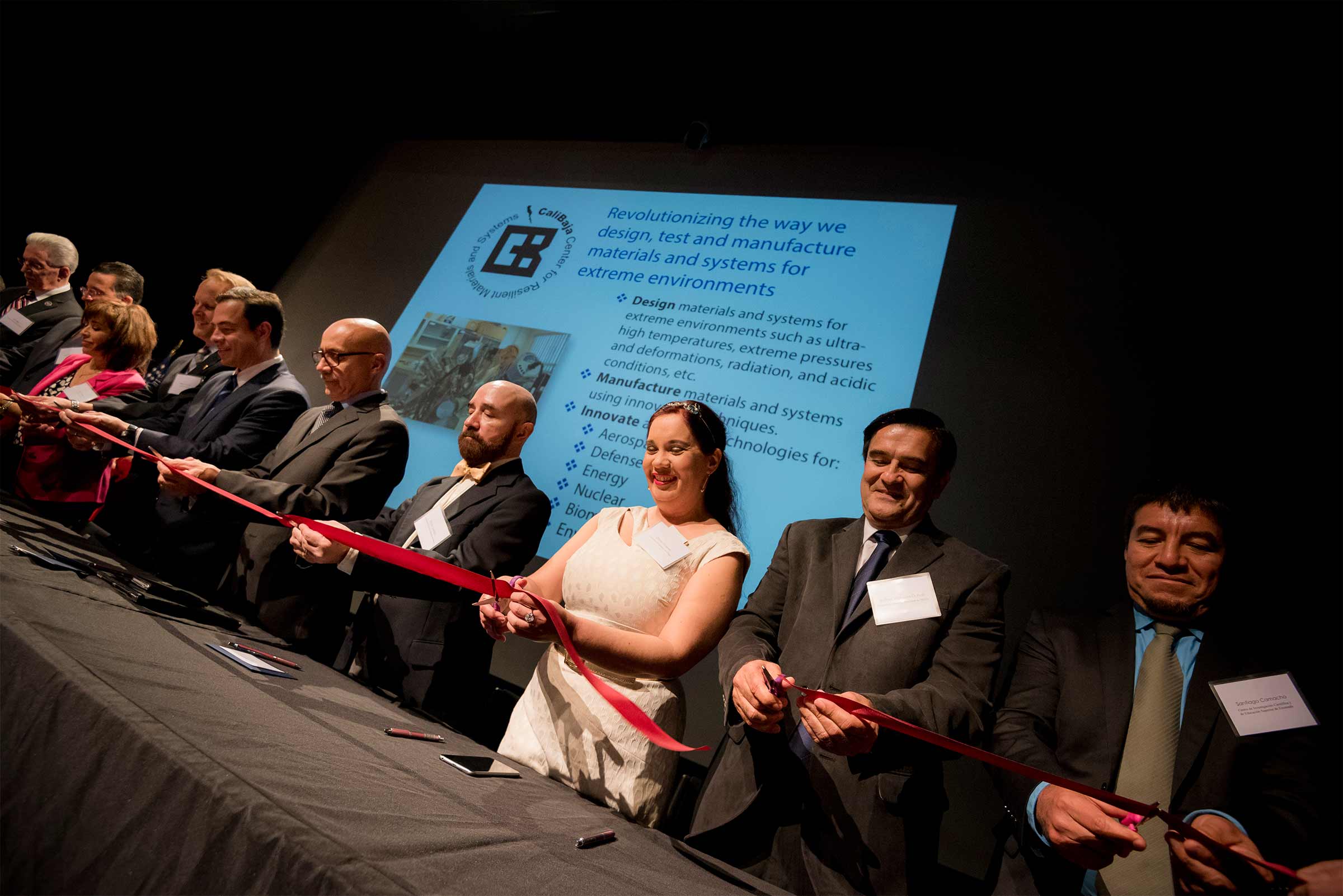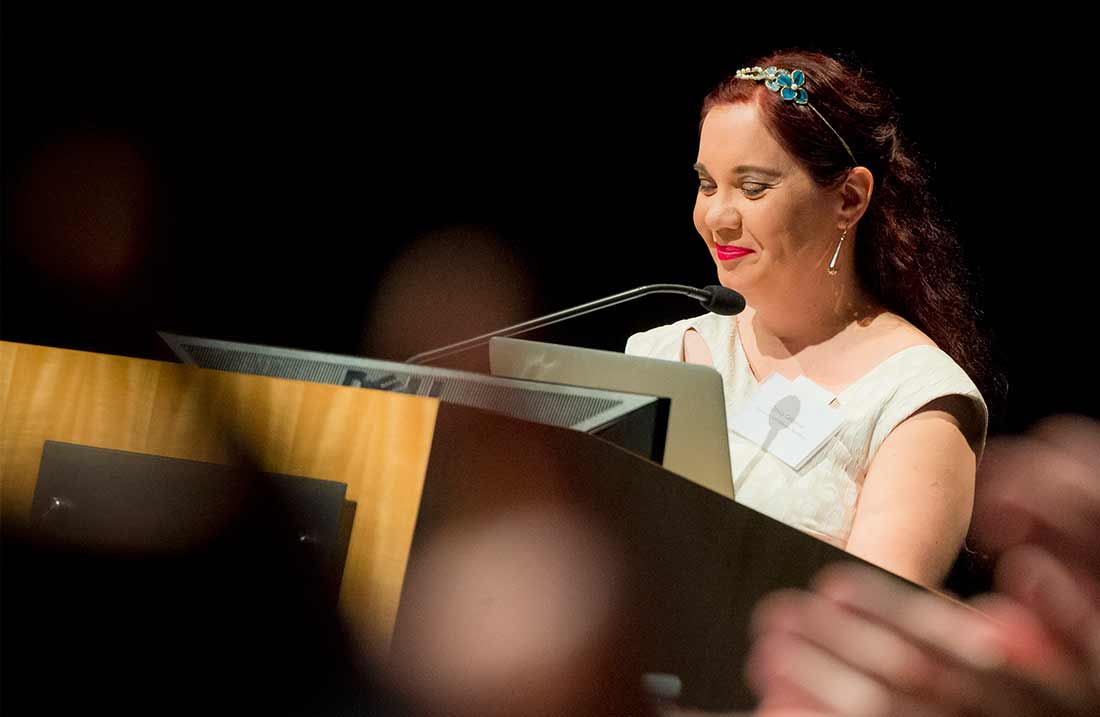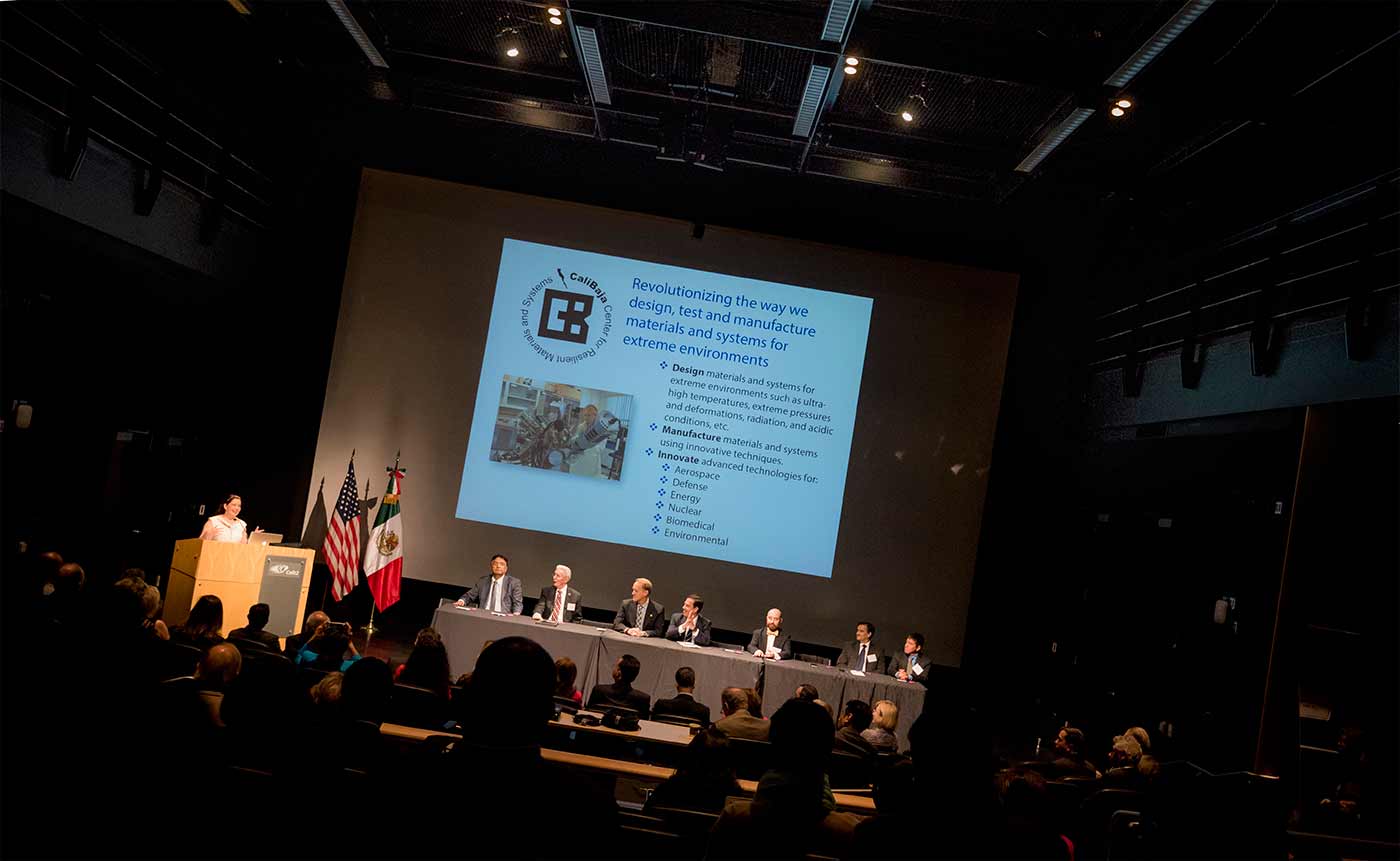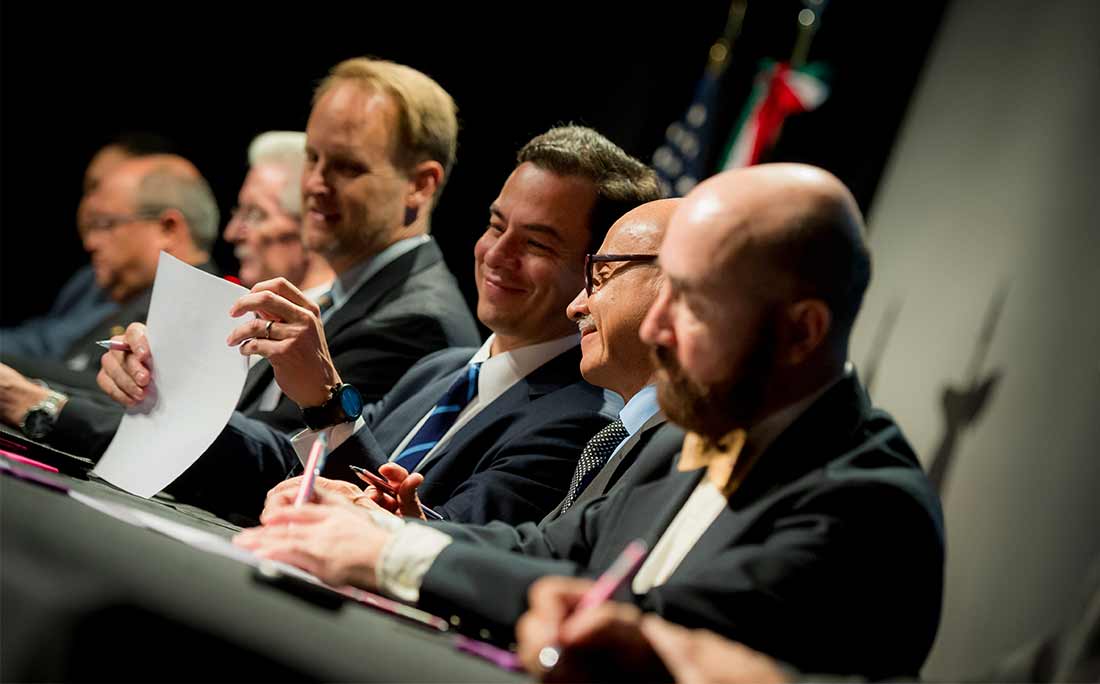By:
- Ioana Patringenaru
Published Date
By:
- Ioana Patringenaru
Share This:
Engineers Launch Cross-Border Center to Create Materials that Withstand Extreme Environments

Representatives from industry and academia and government officials cut the ribbon for the launch of the CaliBaja Center for Resilient Materials and Systems at UC San Diego. Photos by Erik Jepsen/UC San Diego Publications
In a few months, a series of laboratories tucked away on the third floor of Jacobs Hall will buzz with teams of researchers and students from UC San Diego and Mexico. Working together, the teams will create materials that can withstand extreme conditions, from the heat of an engine turbine to the cold of space.
The collaboration is part of the CaliBaja Center for Resilient Materials and Systems, which officially launched May 24 during a ceremony featuring academics, officials and industry representatives from both sides of the U.S.-Mexico border. The center brings together researchers from UC San Diego, the Universidad Nacional Autónoma de México (UNAM) and also the Center for Scientific Research and Higher Education, headquartered in Ensenada. The launch event also included the signing of a memorandum of understanding between UC San Diego, the Baja Aerospace Cluster, the Baja Biomedical Devices Cluster, and CANIETI (Camara Nacional de la Industria Electronica, de Telecomunicaciones y Tecnologías de la Información), Mexico’s trade group representing the electronics, information technology and telecommunications industry.

Olivia Graeve, a professor in the Department of Mechanical and Aerospace Engineering, is the new center's director.
“The University of California continually demonstrates its leadership in promoting and enhancing partnerships across the U.S.-Mexico border region ,” said UC San Diego Chancellor Pradeep K. Khosla. “UC San Diego is proud to introduce this unique center focused on advancing industry-relevant research, as well as preparing students to thrive in bi-national educational, research and industry environments.”
The center brings together researchers from various disciplines, including materials scientists, nanoengineers and visual artists. Researchers will work together across disciplines and industries to create materials and systems that can function at ultra-high temperatures, under extreme pressures and deformations, radiation, and other extreme conditions. The center will develop materials for a wide range of applications, including defense, nuclear, pharmaceutical and aerospace.
The launch of the center is the culmination of a life-long quest for its director, Olivia Graeve, a professor of mechanical and aerospace engineering at UC San Diego and a materials science expert. “This center is the only truly bi-national research center than brings together Ensenada, Tijuana and San Diego,” Graeve said. “We want to make a positive impact on the economy of the CaliBaja region.”
Graeve’s career embodies the center’s spirit of cross-border collaboration. She was born and raised in Tijuana and graduated with a bachelor’s from UC San Diego. She then earned a Ph.D. in Materials Science and Engineering at UC Davis and held faculty positions at the University of Nevada, Reno, and Alfred University in New York before joining the UC San Diego faculty. She now spearheads many outreach programs for underrepresented students at UC San Diego and across the border in Tijuana. She is also the faculty leader for the Jacobs School’s new Student Success Initiative, a master plan for student success, which aims to increase retention and diversity among engineering students at UC San Diego.

Representatives from industry and academia, as well as government officials from the United States and Mexico attended the event.
In addition to research efforts, the center will train students to work seamlessly across borders, Graeve said. That goal was also emphasized by center associate director Rafael Vazquez-Duhalt, a professor at the Universidad Nacional Autónoma de México’s Center for Nanosciences and Nanotechnology, headquartered in Ensenada. Researchers from UNAM, UC San Diego and the Center for Scientific Research and Higher Education (CICESE), also in Ensenada, will work together and go back and forth between each other’s laboratories.
These kinds of initiatives will result in intangible benefits for thousands of young people in the future, predicted José Paulo Carreño King, Undersecretary for North America of the Foreign Affairs Ministry of Mexico. “The CaliBaja center is dedicated to research and human capital,” he said. “The ultimate goal is to transform North America into a region of knowledge. This will foster educational opportunities and will boost industry.”
The U.S. and Mexico must work together to develop a competitive cross-border research ecosystem, said William Ostick, Tijuana’s U.S. Consul General. “This truly collaborative center will contribute to cross-border collaborations for years to come,” he said.

Officials signed three memorandums of understanding between UC San Diego, the Baja Aerospace Cluster, the Baja Biomedical Devices Cluster, and CANIETI (Camara Nacional de la Industria Electronica, de Telecomunicaciones y Tecnologías de la Información), Mexico’s trade group representing the electronics, information technology and telecommunications industry.
Companies that become members of the CaliBaja center will have a wide range of opportunities. They will have access to research reviews, workshops, short courses, visiting scholar opportunities and one-on-one collaborations; connections to emerging technical talent and the most promising and innovative globally aware students; and cross-border collaborations in the field of new materials and systems for extreme environments. Members of the center’s advisory board will have access to fast-track collaborative agreements.
“This center embodies many of the things we must do to be as relevant as possible for the students, researchers and industries in the bi-national CaliBaja region that we call home,” said Albert P. Pisano, Dean of the UC San Diego Jacobs School of Engineering.
In addition to Graeve and Vazquez-Duhalt, the center has one additional associate director, Ruben D. Ortiz-Torres, a professor in the Department of Visual Arts at UC San Diego.
Share This:
You May Also Like
UC San Diego is Strengthening U.S. Semiconductor Innovation and Workforce Development
Technology & EngineeringStay in the Know
Keep up with all the latest from UC San Diego. Subscribe to the newsletter today.



